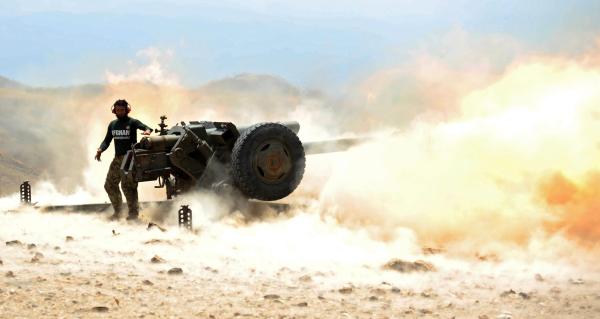Afghan Lieutenant General Mohammad Waziri leading the country’s battle against ISIS recently noticed something odd about the terrorist group’s fighters; for some reason, they would not loot ammunition after raids against state forces.
Gen. Waziri, said that the militants’ disregard for the ‘spoils’ of battle is a clear sign that the militants are already well financed.
“They have a lot of money. Who’s giving it to them? How (are) they getting funds? I don’t know,” Waziri, the commander of the Afghan army’s 201st Selab Corps, told a small group of reporters on Sunday.
The financing, the persistence of ISIS attacks and the ease with which its forces are slipping back and forth across the Afghan-Pakistan border, are some of the reasons Waziri is not boasting too much about territorial inroads against the group this year.
Many of those advances have been the result of U.S. air strikes against the group launched since U.S. President Barack Obama allowed the U.S. military in January to strike militants linked to ISIS’ offshoot in Afghanistan, known as ISIS-Khorasan Province.
General John Nicholson, the top U.S. and NATO commander in Afghanistan, said the U.S. strikes had helped reduce the amount of territory where ISIS has a presence in Nangarhar province to just two or three districts from a maximum of about nine last year.
“Is it as large as it once was? No. Are we encouraged by the reduction? Absolutely. But we need to keep the pressure on,” he told reporters.
Nicholson’s statements were exceptionally cautious.
Militants linked to the Iraq- and Syria-based ISIS have never made as much progress in Afghanistan.
Afghan territory is believed to be mainly overrun by the group which is believed to mostly comprise disaffected members of other insurgent movements, including the Taliban, who have often battled ISIS for control of areas in Nangarhar.
Waziri acknowledged an ISIS presence in each of Kowt, Achin and Dih Bala districts.
Both Waziri and Nicholson, speaking separately, also warned about the group’s presence along the border with Pakistan. Waziri said ISIS militants had training centers and arms depots there and estimated the group had up to 2,000 fighters in the border area.
